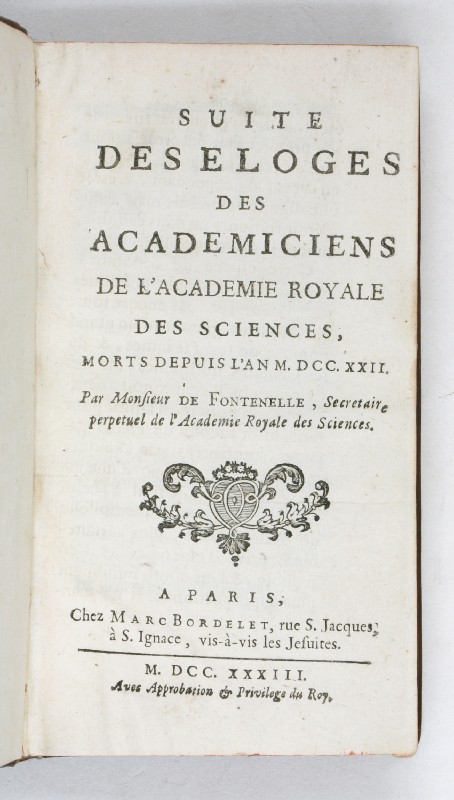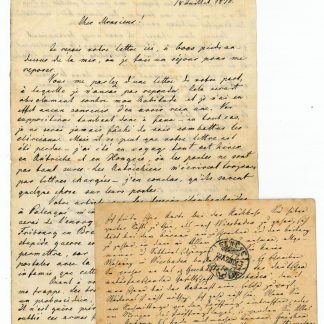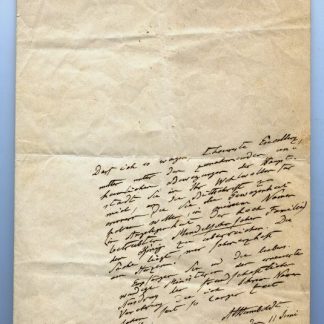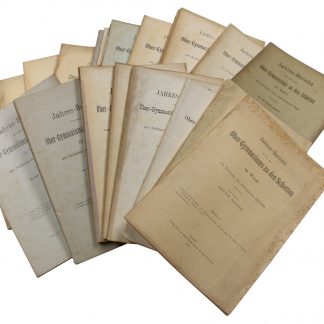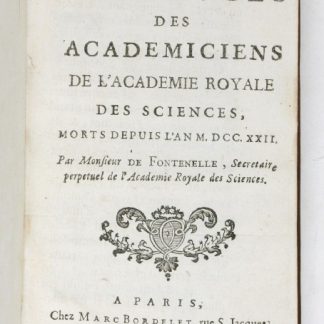Suite des Eloges des Academiciens de l'Academie Royale des Sciences, morts depuis l'An MDCCXXII.
8vo. (8), 322 [but: 422] pp., (2 pp. publisher's catalogue). Bound in attractive and very well-preserved full contemporary calf with spine in six compartments, red and gilt title label, gilt florets.
€ 350.00
Scarce early separate edition of Fontenelle's eulogies, and the first biography of Count Luigi Ferdinando Marsigli to appear publicly outside of the Histoire de l'Académie des Sciences. The work introduces the public to 14 members of the Académie des Sciences deceased between 1725 and 1730, including Czar Peter, Isaac Newton, and Nicolas Hartsoeker. The present edition, however, contains 7 new eulogies which had only appeared previously in the annual journal of the Académie des Sciences: Camille d'Hostun de la Baume, duc de Tallard (Marshal of France); Père Sébastien Truchet, active in mathematics, hydraulics, graphics, and typography; Francesco Bianchini, who worked on calendar reform for three successive popes; Giacomo Filippo Maraldi, astronomer and mathematician; Jean-Baptiste-Henri de Valincour, official historiographer to Louis XIV; Count Luigi Ferdinando Marsigli, Ottoman traveller and Hapsburg cartographer; and Guichard Joseph Duverney, anatomist and author of one of the earliest comprehensive works on otology.
As one of the earliest examples of a popular publication of Fontenelle's eulogies (preceded only by a 1731 Hague printing), the work is an important symbol of what today is seen as Fontenelle's primary accomplishment: while history has smiled on men such as Marsigli and du Verney, it is often forgotten that it was due to works like Fontenelle's, which heavily publicised their achievements to a popular audience, that they are remembered and acknowledged today. "It was Bernard Bovier de Fontenelle (1657-1757) who by his eulogies of scientists first bridged the gap between the scientific communities and the world at large [...] the éloges of the old Academy of Sciences acquainted laymen with a discipline that was at once esoteric by its novelty and forbidding by its terminology and methodology. Hence the éloges, aside from the other functions they performed in the service of science, also served as a public relations organ in the same manner as journals, textbooks, public lectures, literary dialogues, scientific expositions, and cabinets de physique and d'histoire naturelle" (Paul, Science and immortality: the éloges of the Paris Academy of Sciences, pp. 1-2).
One corner and lower edge of cover slightly rubbed, otherwise a lovely copy, pages clean and fresh.
Cf. Charles B. Paul, Science and immortality: the éloges of the Paris Academy of Sciences (1980). For a bibliographical review of Fontenelle's éloges see Suzanne Delorme, "Contribution à la bibliographie de Fontenelle", pp. 303-307, Revue d'histoire des sciences et de leurs applications, Tome 10 n°4, pp. 300-309 (1957).

